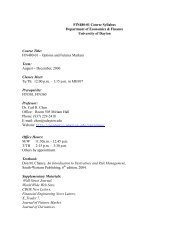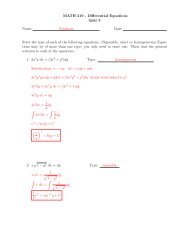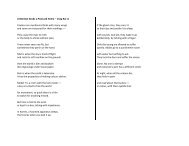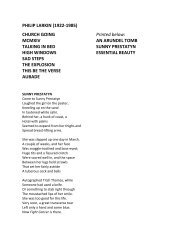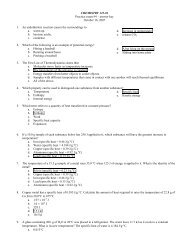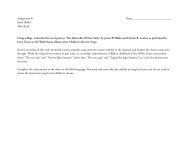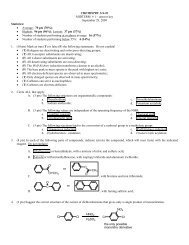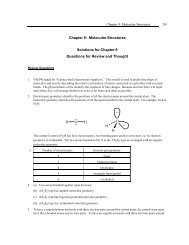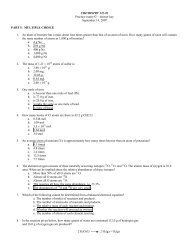Chap 26
Chap 26
Chap 26
You also want an ePaper? Increase the reach of your titles
YUMPU automatically turns print PDFs into web optimized ePapers that Google loves.
238 CHAPTER 10<br />
c. The bank lends out $95,000.<br />
The bank has a new deposit of $100,000 and it must keep 5 percent of it ($5,000) as reserves<br />
and lends the rest ($100,000 minus $5,000), which equals $95,000.<br />
d. The thief’s bank has loaned $95,000. This amount returns to the banks as new deposits. The<br />
banks keep 5 percent, $4,750, in reserves and will lend a further $90,250.<br />
The banks have now created deposits of $100,000 plus $95,000, which equals $195,000.<br />
e. The quantity of money has increased by $195,000.<br />
The first loan is $95,000 which increases the quantity of money by $95,000. When this money<br />
is spent and returned to the bank as a deposit, the banks keep 5 percent of it ($4,750) as reserves<br />
and lend out the rest ($90,250). The loan will be deposited, so in this round, the banks create<br />
$90,250 of new money. So, after 2 loans, the quantity of money has increased by $100,000 +<br />
$95,000 + $90,250, which equals $285,250.<br />
f. The quantity of money increases by $2,000,000. Deposits increase by $2,000,000. Loans<br />
increase by $1,900,000.<br />
The increase in deposits depends on the proportion L of deposits that banks lend out. The total<br />
effect of new reserves on deposits is 1/(1-L), which is 1/(1-0.95), or 20. When reserves increase<br />
by $100,000 and the required reserve ratio is 5 percent, deposits will increase by 20 times<br />
$100,000 which is $2,000,000.<br />
The quantity of money increases by the amount of the increase in deposits.<br />
Deposits increase by $2,000,000 and the reserve ratio is 5 percent, so reserves increase<br />
$100,000. Therefore bank loans increase by $2,000,000 minus $100,000 which is $1,900,000.<br />
9. a. The monetary base is $45 billion.<br />
The monetary base is the sum of the central bank’s notes outside the bank, banks’ deposits at the<br />
central bank, and coins held by households, firms, and banks. There are $30 billion in notes<br />
held by households and firms, banks’ deposits at the central bank are $10 billion (2/3 of $15<br />
billion), the banks hold other reserves of $5 billion (which are notes), and there are no coins.<br />
The monetary base is $45 billion.<br />
b. The quantity of money is $330 billion.<br />
In Nocoin, deposits are $300 billion and currency is $30 billion, so the quantity of money is<br />
$330 billion.<br />
c. The banks’ reserve ratio is 5 percent.<br />
The banks’ reserve ratio is the percent of deposits that is held as reserves. In Nocoin, deposits are<br />
$300 billion and reserves are $15 billion, so the reserve ratio equals ($15 billion/$300 billion) ∞<br />
100, which is 5 percent.<br />
d. The currency drain is 9.09 percent.<br />
The currency drain is the percent of the quantity of money that is held as currency by<br />
households and firms. In Nocoin, deposits are $300 billion and currency is $30 billion, so the<br />
quantity of money is $330 billion. The currency drain equals ($30 billion/$330 billion) × 100,<br />
which is 9.09 percent.<br />
10. a. The monetary base is $110 billion.<br />
The monetary base is the sum of the central bank’s notes outside the bank, banks’ deposits at the<br />
central bank, and coins held by households, firms, and banks. There are $100 billion in notes<br />
and coin held by households and firms, banks’ deposits at the central bank are $5, the banks<br />
hold other reserves of $5 billion (which are notes and coins). The monetary base is $110 billion.<br />
b. The quantity of money is $600 billion.<br />
In Fredzone, deposits are $500 billion and currency is $100 billion, so the quantity of money is<br />
$600 billion.




